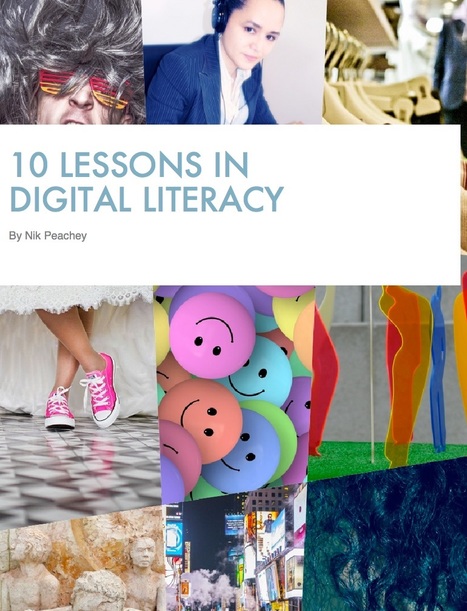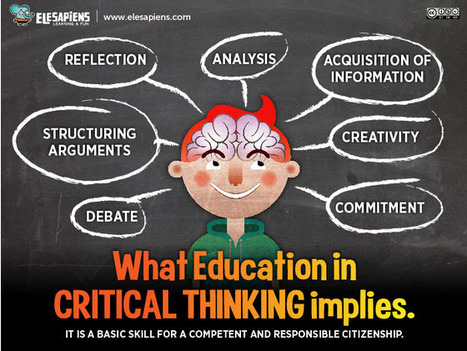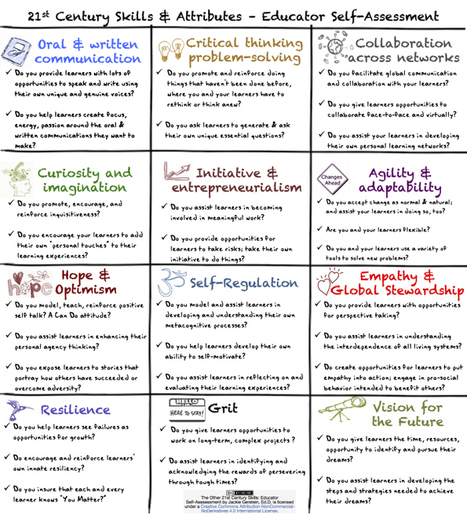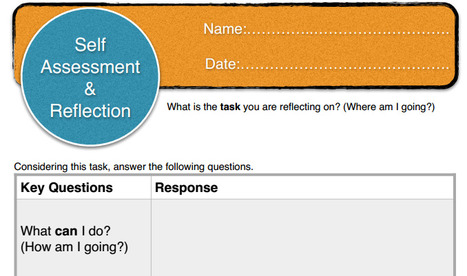This e-booklet contains a collection of ten lesson plans to help you develop students' digital literacies and critical thinking skills. Based around authentic infographics the lessons start by using discussion to help students access what they already know about the topics and then move on to comprehension and a range of tasks that help students to explore the validity and authenticity of the information they find. They finish with structured research and presentation tasks that encourage students to work collaboratively and share what they have learned.
Get Started for FREE
Sign up with Facebook Sign up with X
I don't have a Facebook or a X account

 Your new post is loading... Your new post is loading...
 Your new post is loading... Your new post is loading...
Beth Dichter's curator insight,
July 11, 2014 9:38 PM
Teaching students to ask questions is not an easy task. This is the first in a series of two posts that will explore ways that teachers may ask questions to help their students "learn more from text and from the world around them." He is using the book Goldilocks and the Three Bears to model a number of strategies to use in the classroom * Tell - Read the story or have them read the story. Ask questions that refer back to the text * Suggest - Provide "children with choices about what might happen next or possible opinions they might have." * Ask a closed question - "These questions generally elicit yes or no answers. They can bring students to different temporal areas or elaborations of details, but the extent of this is structured by the question." * Ask an open ended question - questions that provide lots of options. * The two-question rule - follow the first question with a second question allowing students to probe more deeply (and sometimes a third question). Find examples of questions for each area listed above as well as the reasoning behind why the two-question rule is a good one to use.

María Dolores Díaz Noguera's curator insight,
March 18, 2014 8:35 AM
Critical Thinking: Educating Competent Citizens 
Susan Walker-Meere's curator insight,
November 9, 2014 12:49 PM
I would add: Trans-disciplinary thinking; systems thinking for sustainability. Most people can not see the forest through the trees so miss the larger connections of the impacts that action, goods & services have on both environmental systems and human systems. 
Willem Kuypers's curator insight,
November 16, 2014 3:48 PM
La pensée critique, une competence clé du 21ème siècle avec tant d'information qui nous arrive. |

David Baker's curator insight,
February 17, 2015 10:54 AM
The power of the Infographic is that it references both teacher and student actions and habits. I have shared it with my teachers. This might become a solid self-assessment tool for coaching conversations with teachers. 
Kristen McDaniel's curator insight,
April 3, 2015 12:05 PM
Interesting graphic with some great ideas on interpreting 21st century skills as they pertain to teaching
Beth Dichter's curator insight,
April 4, 2014 9:21 PM
Andrew Church has created a tool for Self-Assessment and Reflection that asks students to answer 4 questions: * What can I do? ((How am I going?) * What can't I do? (How am I going?) * How does my work compare with others? (How am I going?) * What can I do better? (Where do I go next?) And then students are asked to look ahead with this question: * What are my next steps? (What actions are you going to take as a result of your reflections? Who can help me? Where to next?) You can download two versions of this as a pdf file. One is in portrait mode and one in landscape mode. Church also asks that you provide him with feedback. 
Carol Thomson's curator insight,
April 6, 2014 3:35 PM
Have been looking for something i can use with students that they understand and dont panic about. |












